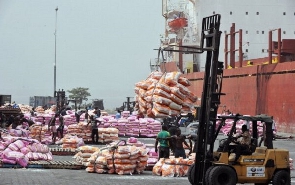The value of essential agricultural and related imports was US$2.66 billion in 2023, a decrease of about 2.5 percent compared to US$2.73 billion in 2022, data from the United States Department of Agriculture (USDA) have indicated.
USDA noted the slump was due to relatively minimal gains made toward advancing the country’s economy after an IMF intervention.
The Department noted the country’s economy is highly dependent on exports of primary commodities such as gold, cocoa and oil, with principal agricultural imports including wheat, poultry meat, soybeans, dairy products, vegetables and fruit, among others.
Amid the heavy reliance on imports, USDA said the total value of U.S. agricultural and related products imported into Ghana was US$107 million in 2023. This, it noted, represents a decrease of about 15 percent compared to the US$126.28 million in 2022.
According to the Department, Ghana remains a major importer of food and agricultural products. These imports will continue to grow as the country’s underdeveloped food processing sector is unable to meet increased demand, it added.
The majority of these imports comprise bulk, intermediate and consumer-oriented commodities such as rice, soy and poultry.
Trade data from USDA also show that although U.S. exports to Ghana have mostly been rice and poultry, exports of dairy products, fruit and vegetable juices, non-alcoholic beverages, breakfast cereals, chocolate and cocoa products, dog and cat foods have been recording significant growth in recent years.
Despite the gains for U.S. exports, USDA said other sources of consumer-oriented products dominate the Ghanaian market.
Among the major source countries are the E.U., China, Brazil, the U.K., Turkey, Canada, India, Cote d’Ivoire, Malaysia and others.
Growth of imported retail sector
As the current economic decline is starting to stabilise after the country sought International Monetary Fund help, USDA is also optimistic that retail spending – which increased to US$24 billion in 2023 – will improve during the coming years.
With traditional retail channels in Ghana preferred over modern channels, largely due to the lower prices, the Department said modern grocery retailers will continue increasing in future due to growing urbanisation and a growing middle class.
Ghana’s current retail sector is made up of large supermarkets and hypermarkets, mid-sized grocery stores, convenience stores and smaller independent shops, stalls or kiosks near homes and in open markets.
Click to view details



Business News of Wednesday, 13 November 2024
Source: thebftonline.com
Essential commodity imports slump to $2.66 billion
Opinions
















